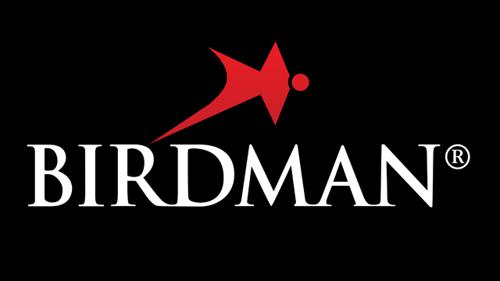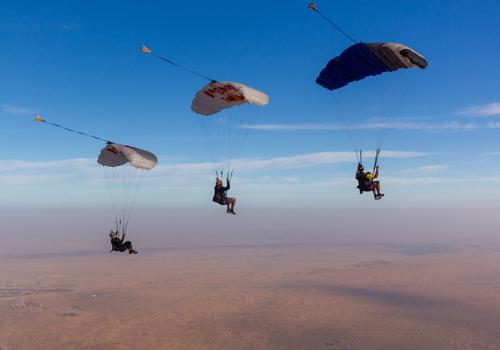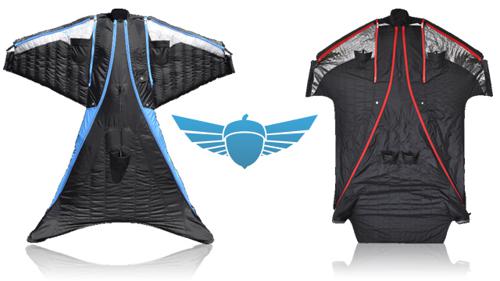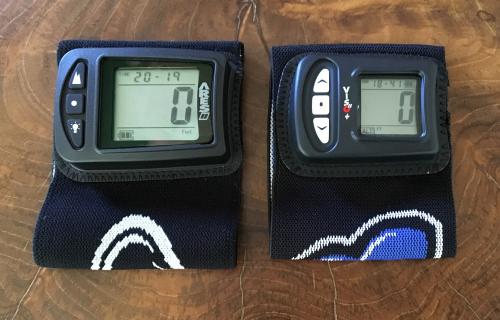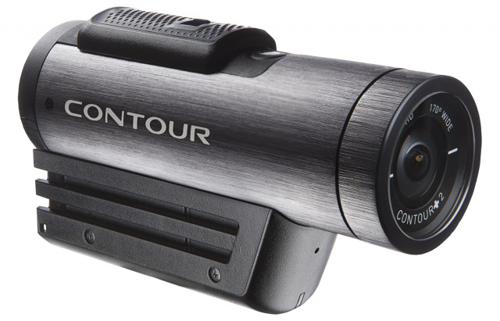The Return of BIRDMAN
The Birdman is flying again! This past week, BIRDMAN® International ltd jumped back to life with the addition of some new content, along with a new website design. The company, which halted sales on gear in 2010 due to a change in ownership structure - now has blood pumping through its veins again. The press release that was posted to the website highlights a number of details regarding the company; it's structure, ambitions and new direction are all addressed. This news has caught the attention of wingsuiters everywhere, many eagerly anticipating the new products that are set to emerge from the restructured Birdman company.
Birdman's Return
The question on many lips surrounds what exactly went on during the past 30 months with regards to Birdman as a company. What structual changes were made, and where Birdman are headed from here. These are all questions that have addressed in the BIRDMAN® International ltd press release that they have posted on their site. One question that only time will be able to answer, is whether or not Birdman have what it takes to return to the market with the dominance they once held.
Firstly, Risk Control Corp. will be the manufacturer and seller of BIRDMAN® International ltd suits under license worldwide from Japan. Risk Control Corp is run by Shin Ito, who is now seen as the strategic partner to BIRDMAN® International ltd. Shin Ito is a world renowned and record holding skydiver and specifically wingsuit flyer. Jari Kuosma, from BIRDMAN® International ltd states that Shin Ito has been the driving force behind the new birdman line as co-creator. Jari goes on further to say that while in the past BIRDMAN® International ltd had trouble in regards to the sewing of the suits, he now feels more comfortable in the manufacturing process - having professionals to work with, ensuring the best possible quality for the new Birdman suits.
There is clearly a new focus on the Birdman products, and that focus seems to be quality. The company seems to have shifted away from the more economic suits and instead are focusing on supreme quality as opposed to an economic wingsuit option. The claims are that no corners were cut with the new line and that the aim was to create cutting edge suits that provide top quality. The paragraph closes with the wording "However, I dare to claim that the value of the new suits will be higher than the price tag. You'll see."
The website indicates that the new line will come out with 3 new wingsuits. The Birdman Blade III has already been put live on the site, with detailed information publicly available, while the other two suits, the Samurai and the Ninja - are both yet 'to be announced soon'
The Blade III
A new wingsuit has also been made available by BIRDMAN® International ltd. The Blade III is said to be targeted towards experienced skydivers and will be the first product to be released having been created with the help of Shin Ito.
An extract from the Birdman website says the following about the suit:
"BLADE III is very powerful all-around wingsuit made for experienced wingsuit pilots who want to enjoy their flight from exit to landing. It is balanced perfectly giving pilot 100% control of pitch and speed. It’s drag-reducing quattro–wing platform has large, carved and specially shaped wings for best lift, agility and speed. This gentleman’s race craft comes all included; four wings, semi-rigid ribs & mini-ribs, pockets, inner lining, extra sturdy booties & 10 mm YKK zipper and over the shoulder zip for easy dossing. It will be offered in 5 color scenes."
Birdman Watches
It seems that wingsuits aren't the only products that BIRDMAN® International ltd are returning to the industry with. The company has also released information on a line of skydiving watches that they will be selling. The watches are supposedly designed with skydivers in mind and consists of a carbon fibre face, a case of aerospace grade 316-L stainless steel and 'virtually scratch-proof' sapphire crystal. The watches are said to be water resistant to 100 meters and the straps made from parachute nylon, so that you can be sure that they aren't going to snap under pull.
The History of Birdman
Birdman started out making wingsuits in 1999, at a time when the wingsuit manufacturer market was extremely small - in fact, Birdman is generally recognized as one of the first wingsuit manufacturing companies. They released the BirdMan s.u.i.t in '99, as their first commercial wingsuit. The year after that they released both the BirdMan GTi and the Classic. In 2001 they continued the new lines with the BM SkyFlyer and the Classic II being released. A year later they expanded into tracking pants, releasing the Birdman Tracking Pantz. In 2003 the SkyFlyer and S.3 were released, followed up in 2004 by the Phi. 2005 saw the release of the quite popular Firebird and Firebird-R wingsuits. Between 2006 and 2009, Birdman released several more suits including both the Blade and the Blade II in 2007 and 2009 respectively.

